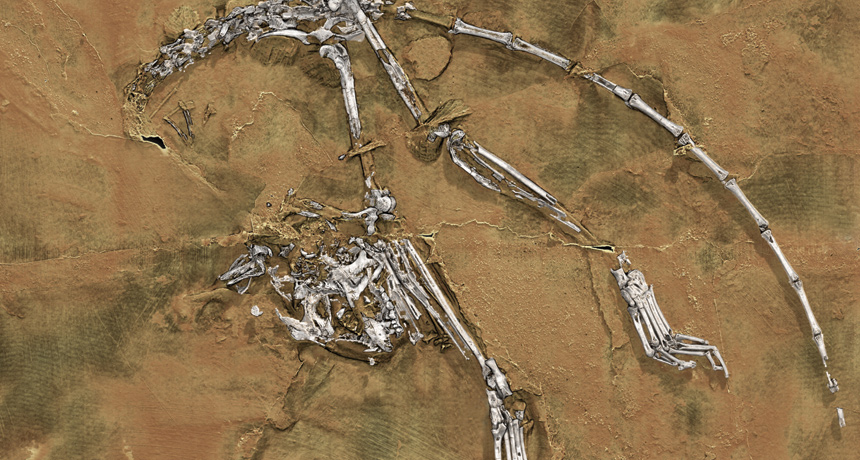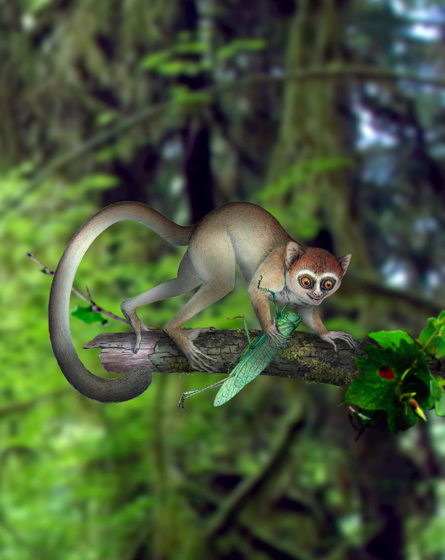Fossil sheds light on early primates
Partial skeleton near root of monkey, ape and human line

The oldest known primate specimen, a 55-million-year-old partial skeleton of a 1-ounce creature, was analyzed using a digital 3-D reconstruction .
Paul Tafforeau/ESRF and X. Ni/Chinese Academy of Sciences
A palm-sized creature sporting a tail longer than its body has given scientists an unprecedented look at one of the earliest phases of primate evolution.

An international team led by paleontologist Xijun Ni of the Chinese Academy of Sciences in Beijing analyzed this animal’s 55-million-year-old remains, the oldest known primate skeleton. Discovered 10 years ago along an ancient lake bed in central China, the fossil comes from a previously unknown genus and species, Archicebus achilles, the scientists report June 6 in Nature.
Over the past decade, digital scanning of the find with X-rays enabled the scientists to assemble a 3-D reconstruction of the fragile skeleton.
Archicebus was the earliest member of a group that eventually evolved into tarsiers, small primates that now live in Southeast Asia, Ni says. The skeleton includes some unexpected features, however, that look less like tarsiers and more like ancient anthropoids, the primate precursors of monkeys, apes and humans. These traits include small, forward-facing eyes and monkeylike feet.
“Archicebus marks the first time that we have a reasonably complete picture of a primate close to the evolutionary divergence of tarsiers and anthropoids,” Ni says. That split probably occurred between 60 million and 55 million years ago, he estimates.
Researchers suspect that primates first evolved sometime between 85 million and 65 million years ago, around the time of the dinosaurs’ demise. Whatever the exact timing, the new Chinese find bolsters the idea that primates started out in Asia, Ni says.
Paleontologist Erik Seiffert of Stony Brook University in New York agrees that primates likely have Asian roots. But the skull and teeth of another creature from around 55 million years ago, Teilhardina (SN: 1/3/04, p. 4), display traits suggesting that it was the oldest relative of tarsiers, Seiffert holds. Whether Archicebus or Teilhardina prevails as the earliest tarsier ancestor, this line of research will help to clarify the timing of the evolutionary split that led to rise of monkeys, apes and ultimately people.
Ni’s team uncovered Archicebus by splitting apart two thin layers of rock encasing about half of a skeleton. Each layer contains bones as well as impressions of bones from the other side.
Weighing in at about 1 ounce, Archicebus was slightly smaller than the tiniest living primates, Madagascar’s pygmy mouse lemurs, the researchers report. Other early primates, including the common ancestor of tarsiers and anthropoids, must also have been minuscule, Ni says.
Given its small eyes, Archicebus was probably active during the day, unlike today’s big-eyed tarsiers and lemurs.







